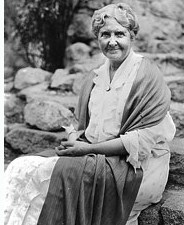Last updated: June 17, 2020
Article
Women of Yosemite: The Concessioners
Women have played an important—though often hidden—part in Yosemite. In the 1800s, women were expected to play a traditional role in the private world of the family and the home. With the birth of the railroad and as the Gold Rush drew people to California in the late 1800s, pioneering women found ways to broaden traditional roles.
Concessioners are people and businesses who provide services to park visitors and staff, but who are not direct employees of the National Park Service.
Concessioners are people and businesses who provide services to park visitors and staff, but who are not direct employees of the National Park Service.


